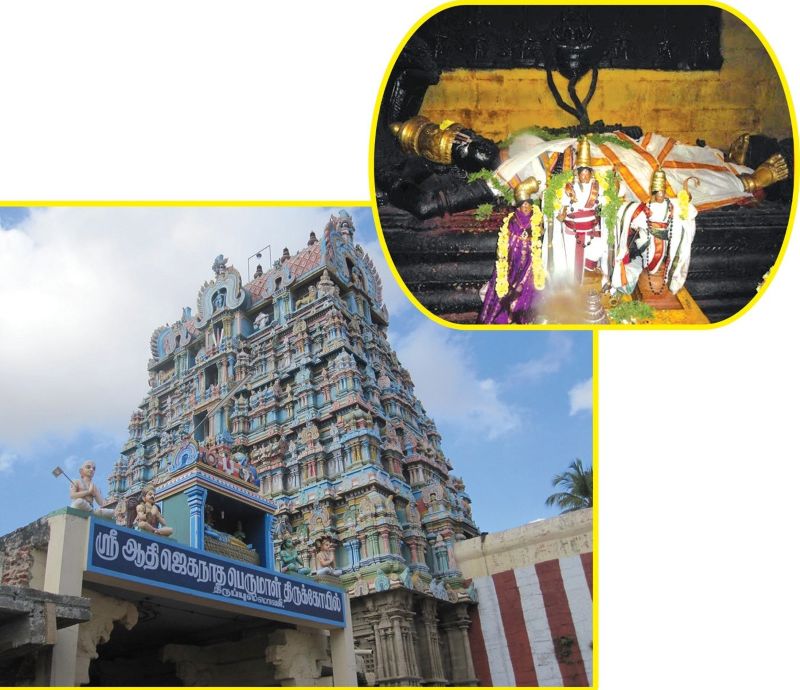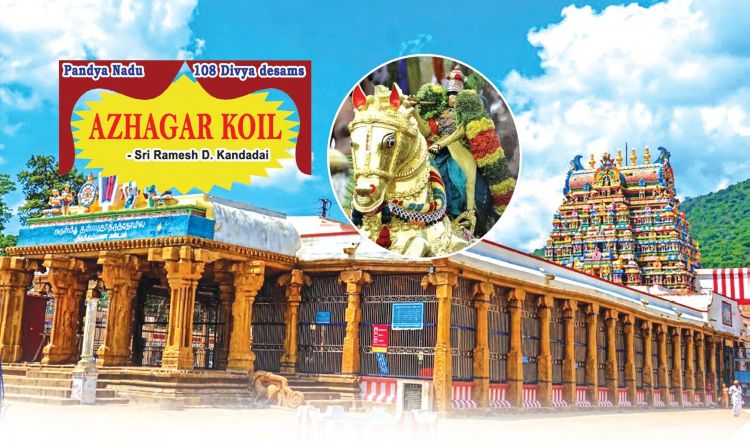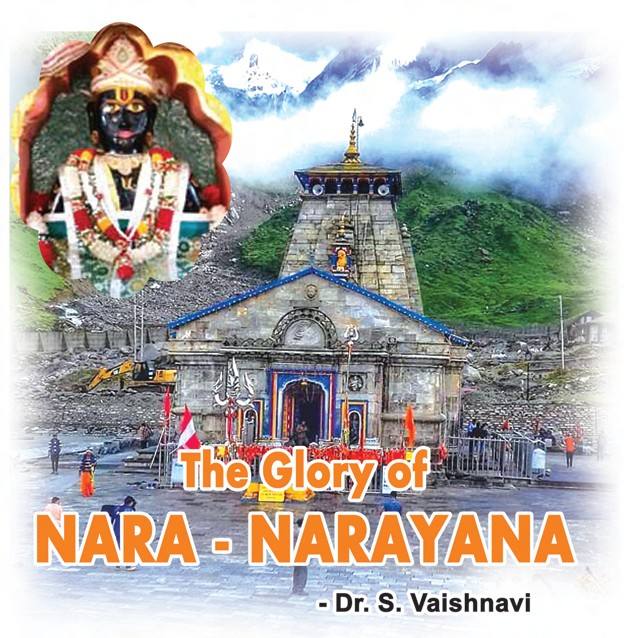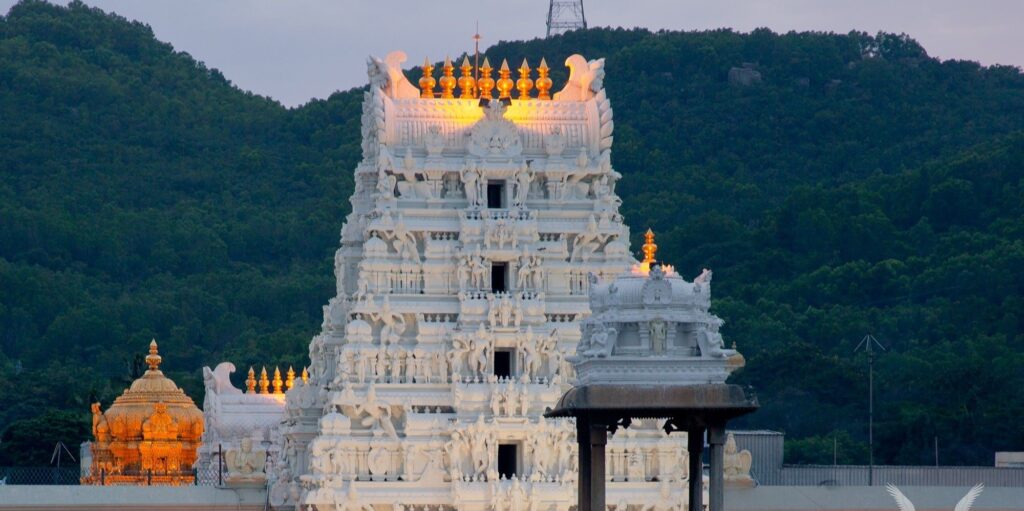Sri Aadhi Jagannatha Temple – Thiruppullani Location Thiruppullani is about 125 km due east and a little south of Madurai in Tamil Nadu near the town of Ramanathapuram. Thiruthangal is 80 km south and a little to the west of Madurai. Temple location on Google Maps Thirupullani Sthalapuranam The place has a double connection with Read More
Category: 108 Divya Desams
Divya desam Temples are the 108 Vishnu temples that are mentioned in the works of the Tamil Azhvars (saints). ”Divya” means “premium” and “Desam” indicates “place” (temple). Of the 108 temples, 105 are in India, one is in Nepal, and last two are outside the Earthly realms. The last two are Thirupalkaddal and Paramapadam
Sri Sathyagiri Natha Perumal Temple, Tirumayam (108 Divya Desams)
Sri Sathyagiri Natha Perumal Temple, Tirumayam Location Tirumeyyam town is located approximately 70 to 100 km east and north of Madurai in Tamil Nadu. Divya Desam Sri Arulmigu Sathyagiri Natha Perumal Temple (Location of the temple on Google Maps) Sthalapuranam It is said that the sage Satya prayed for salvation and Lord Vishnu promised to Read More
Sri Sowmiya Narayana Perumal, Tirukostiyur (108 Divya Desams)
Sri Sowmiya Narayana Perumal, Tirukostiyur Location Tirukostiyur is located approximately 70 to 100 km due east and north of Madurai in Tamil Nadu Sthalapuranam A large group of sages gathered here to debate on Hiranyakasipu’s torture and prayed to Lord Vishnu along with other ‘devas’ to show the form He would take to kill the Read More
Kallazhagar Sundaraja Perumal Temple (Azhagar Koil) – Divya Desam
Arulmigu Kallazhagar Sundaraja Perumal Temple Location Sundaraja Perumal Temple Divya Desam is located approximately 20 km north of Madurai in Tamil Nadu on the slopes of Azhagar Malai which is also the part of a reserve forest. Since time immemorial, monkeys abound in this area. Click here for the temple location on Google Maps. Azhagar Read More
Sri Yoga Narasimha Swamy Temple, Sholinghur (108 Divya Desams)
Sholinghur Temple Sri Yoga Narasimha Swamy Temple is located on a hilltop in the town of Sholinghur, about 100 km west of Chennai. It is easily reachable by road. click here for the “Arulmigu Sri Yoga Narasimha Swamy Temple” location on Google Maps Sthalapuranam According to legend, the sage Vishwamitra received the title of Brahmarishi Read More
Glory of Nara and Narayana
Glory of Nara and Narayana The very first verses in ‘Jaya’ are usually recited after having bowed in obeisance before Narayana (Lord) and Nara, (the supreme human being), Goddess Saraswati and sage Vyasa as mentioned below. Narayanam namaskruthya naram chowa narothamama Deveem saraswatheem vyaasam thatho jayamudheerayet || The above verses convey that ‘I bow down Read More
Sri Parthasarathy Swamy Temple (108 Divya Desams) – Tiruvallikeni (Triplicane)
Sri Parthasarathy Swamy Temple – Location Tiruvallikeni temple is located in the heart of the city of Chennai on the shores of the Bay of Bengal. One of the first three Alwars identified it. It is probably one of the oldest structures in Chennai with approximately 1400 years of history. The temple appears to have Read More
Sri Sthala Sayana Perumal Temple, Mahabalipuram (Divya Desams)
Sri Sthala Sayana Perumal Temple Location & Introduction: This temple is located approximately seventy km due south of Chennai on the shores of the Bay of Bengal in a small town called Mahabalipuram. Click here for the temple location on Google Maps Sri Sthala Sayana Perumal Temple Sthalapuranam According to legend, Pundarika Maharishi wished to Read More
Nithya Kalyana Perumal Temple, Thiruvidanthai (Divya Desams)
Nithya Kalyana Perumal Temple Location & Introduction: Tiruvidanthai / Thiruvidanthai is a small village on the outskirts of Chennai on the shores of the Bay of Bengal about forty km due south of Chennai. The temple was built by the Pallavas with the latest additions by Cholas. Click here for the temple location on Google Read More
Divya Deshams: The 108 Sacred Vishnu Temples of India
Everything about Divya Deshams Ritual is an external demonstration of religion. It provides a scope for us to observe religion outwardly. It is akin to the feet of religion. It may not be the essence of the religion, yet it is not a non-essential part of the religion. It is, so to say, an outer Read More




